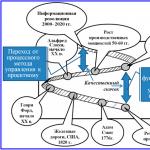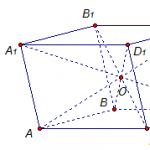This electric lighter will be an excellent kitchen assistant for gas stoves that do not have an electric ignition function. It is very convenient and trouble-free in operation. You can make it yourself by spending just a couple of hours of your time, having previously stocked up on a piece of one-sided foil fiberglass and a minimum of inexpensive and radio components. A sketch of a printed circuit board and a drawing of the proposed design will serve as a faithful assistant.
The principle of operation of the homemade design is based on the cyclic charge-discharge of the C1 capacitance. This is done when the button SВ1 is pressed. Through resistance R1, diode VD1 and the primary winding of the transformer. And when C1 is discharged, current flows through the circuit of the open thyristor, diode VD2, and the primary winding of the step-up transformer. A high-voltage voltage is induced in the secondary winding of the transformer, which causes the formation of a spark in the gap between the electrodes and ignites the gas.
The transformer is made on a piece of ferrite rod 2 centimeters long from any radio receiver. Having wrapped the rod with electrical tape, the secondary winding is wound onto it in sections of 6 by 90 turns with PEV-2 0.06 wire. Then they isolate the high-voltage winding and proceed to winding the primary winding of only four turns, with a wire of the same brand, but with a diameter of 0.5 mm.

The peculiarity of this simple amateur radio design is that the printed circuit board is also a supporting structure.
Spring contact SB1 is made from a strip of brass 0.2 mm thick and 8 mm wide. The button itself is made of any insulating material, as an option, plexiglass.

The lighter body is glued from sheet polystyrene or similar material. Complete isolation of the high-voltage part from all others makes this device absolutely safe to use.
Now let's think about where we can use this filling? There are a lot of options, we will consider only the most interesting ones, which can serve as the basis for more serious projects.
So, the first design based on a Chinese electric gas lighter is a device for transmitting electric current without wires.

In fact, such a device is outrageously simple, you don’t even need to redo anything. First, we disassemble the lighter and remove the mechanism. We unsolder the high-voltage coil, then we need to wind two circuits. Circuits are needed to transmit and receive electrical current.

The transmitting circuit is not critical (and neither is the receiving circuit); in my case, the circuit is wound on a pipe with a diameter of 20 cm. The winding wire was used with a diameter of 0.6 mm, the number of turns was 40. This circuit is soldered in place of the high-voltage transformer. The second circuit is the receiving circuit, in my case it is wound with 0.4 mm wire and contains 80 turns. You can wind it on anything, the diameter of the frame is from 5 to 20 cm.

To check the functionality of such a system, you need to connect an LED (any color, polarity is not important) to the terminals of the receiving circuit through a 1 kilo-ohm limiting resistor. The operating frequency of the converter is about 80-120 hertz. A voltage is generated in the receiving circuit, the frequency of the current is equal to the frequency of the pulses that are supplied to the receiving circuit. As you can see, the LED in this case is not powered by direct current, but the bursts are very fast and the human eye is not able to see the intervals and we perceive such light as constant.
So, we looked at one of the simplest methods of inductive current transmission without wires. Thus, you can transmit current over 10-15 cm, you just have to ask yourself the question - where to apply it? This method can be used everywhere - from wireless chargers for mobile phones and laptops, to Tesla transformers. I won’t explain the diagrams and designs in detail, I’ll just throw out a few ideas.
1) From the receiving coil we receive a high frequency current, it can be rectified, then stabilized and used to power or charge autonomous devices.

The second design based on a Chinese electric gas lighter is a charger from one AA battery. You can charge both a mobile phone and receivers and players.
Original scheme

Remaking the circuit in the memory

The design of such a charger is quite simple. Again, you need to disassemble the lighter and unsolder half of the components from the board. From the board we need a converter based on a self-oscillator. The converter consists of a transformer, a transistor and a base resistor. We also leave a pulse diode on the board, which is necessary for rectifying the current. Next we need a 5.6 volt zener diode and an electrolytic capacitor. The capacitance of the capacitor is not critical (100-1000 µF), the voltage should be 10-50 volts.

As a result, we have a simple charger for a mobile phone from one battery, the assembly of which does not require much effort. The most interesting thing is that you can even use AA batteries, and with a voltage of 1.2 volts, the device continues to operate even if the voltage on the battery is about 1 volt. All you have to do is find a suitable case and you will have a full-fledged field charger for mobile devices.

As mentioned above, Chinese lighters with electronic filling are too weak. The other day I decided to strengthen one of these lighters for its intended use, since without modification it is not capable of igniting gas.

The internals are standard - a converter and a high-voltage coil. The device works very simply: voltage from a AA battery is supplied to a self-oscillating converter, and a voltage of 40-50 Volts is generated at the output of the first transformer. This voltage is then rectified through a pulse diode and accumulated in a capacitor. In this case, a 50 volt 0.33 µF film capacitor was used. Once the capacitor is fully charged, part of the voltage is applied to the control electrode of the thyristor, causing the latter to open. By opening the thyristor, the capacitor gives all its potential to the primary winding of the high-voltage coil, i.e. the capacitance of the capacitor is discharged into this winding. As a result, an electromagnetic field is formed and an electric current is generated on the secondary winding. The voltage reaches up to 7 kV due to the large number of turns, so electrical discharges can be observed.

The frequency of opening of discharges at the output is proportional to the frequency of opening of the thyristor per minute. The frequency of these discharges directly depends on the supply voltage. To increase the frequency, two batteries were used. Nickel-cadmium batteries total voltage 2.4 volts, capacity 250 mA.

With this power supply, the discharge frequency increased at least 3 times; three batteries could be used, but there was not enough space in the case. Next I decided to strengthen the savings part. To do this, another capacitor was soldered parallel to the main capacitor, exactly the same as the first. As a result, the total capacitance of both capacitors is 0.66 μF. Thus, the discharges became brighter and the frequency increased. The converted lighter does its job successfully. In the future it is planned to add a built-in charger from a 220 volt network.
Probably everyone has heard and seen on YouTube lighters (for cigarettes or a gas stove) that produce an electric arc, but in this design, thanks to modulation, sound effects are also obtained - a kind of plasma speaker. The design contains a Li-ion battery that powers the transistor switches. The control signal of the transistors comes out of the microcontroller PIC12F1840. It generates a 15 kHz PWM signal, and modulation to the rhythm of music allows you to broadcast sound through a burning electric arc. You will find the program code and diagram below.
Schematic diagram of a plasma lighter
 Scheme of a plasma singing lighter on a microcontroller
Scheme of a plasma singing lighter on a microcontroller How it works
The program controls the transformer using complementary PWM signals at a carrier frequency of 15 kHz to generate an arc.

It then modulates the signal (and therefore the plasma arc) at audio frequencies to create a melody.

The photographs show a ready-made factory device, but using the diagram above, you can assemble such a plasma singing lighter yourself -.
 Disassembled device
Disassembled device  Electric lighter - board with parts
Electric lighter - board with parts  Lighter with modulated electric arc
Lighter with modulated electric arc The electric lighter is powered by a lithium battery of suitable size, for example from an old mobile phone or a battered smartphone. The battery is charged from Micro-USB () via a charger chip LTC4054.
Video of the lighter working




